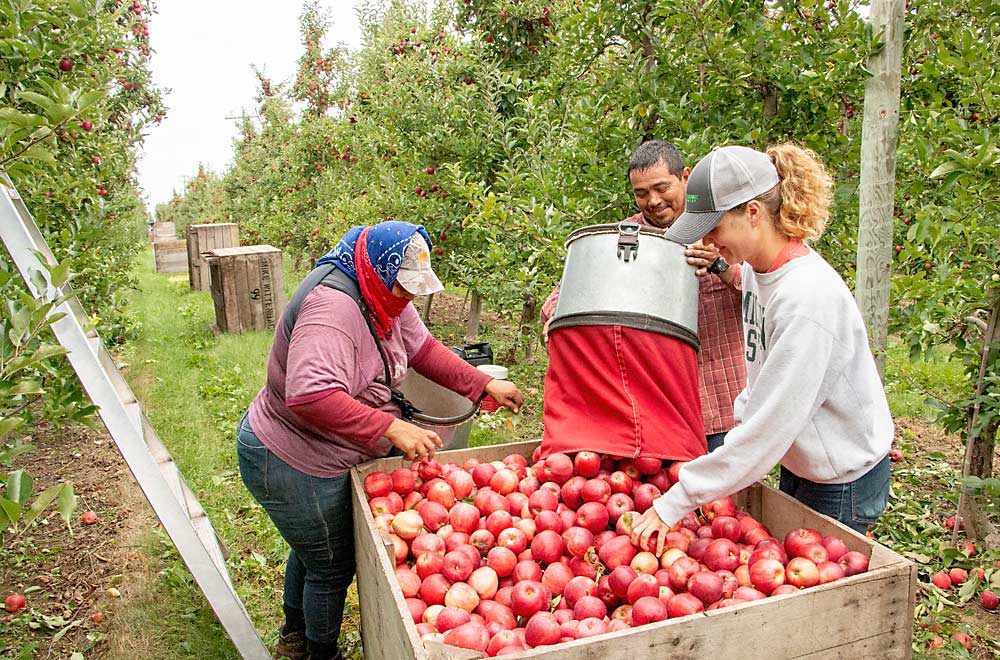
It was late September, roughly the halfway point and peak picking period of the apple harvest, and things appeared to be shaping up nicely for growers in Kent County, Michigan, center of the famous Fruit Ridge growing region that contains nearly two-thirds of the state’s apple crop.
On Sept. 26, growers on the Ridge were picking Gala and Honeycrisp, the “big varieties that keep us picking every day,” said Amy Irish-Brown, a tree fruit educator with Michigan State University Extension.
Fruit quality was “outstanding,” with good color and sugar development, excellent size, and higher-than-average firmness, she said. Labor, always a concern, was adequate. Pest and disease problems were no greater than expected. There was very little bitter pit or water core and only spotty signs of injury from the brown marmorated stink bug. The weather was warmer than usual, and though there had been quite a few rainy days up to that point, they hadn’t slowed down picking too much.
Overall, the apple harvest was moving along at a nice, even pace, Irish-Brown said.
The only major hitch to an otherwise exemplary harvest was a mysteriously light load of Honeycrisp. The crop was spotty throughout the region, with some blocks yielding an ample crop while others did not, some trees bearing lots of fruit while others failed to do so.
No one was quite sure why Honeycrisp was light this year, but a poor return bloom from 2018 might have had something to do with it. Honeycrisp initiates flower buds earlier than other varieties, and the hot, dry summer of 2018 might have damaged those early buds, Irish-Brown said.
“Honeycrisp has lots of problems in general,” she said. “It’s an odd variety. Most everything else came back with wonderful bloom.”
Phil Schwallier, owner of Schwallier’s Country Basket in Sparta, Michigan, and an MSU Extension specialty crop production educator, confirmed that harvest was going well, not just for his orchard but for other Ridge growers.
“Apple quality is beautiful, with a nice red color and large fruit size,” Schwallier said.
Windstorms had knocked some of his apples off the trees, but the loss was minor.
“I’m seeing a lot of truckloads going down the road,” Schwallier said. “I’m not hearing of labor shortages. Most growers seem pleased, from what I hear.”
Justin Finkler, an operations manager with Riveridge Produce Marketing, said apple pressures were holding well, and fruit size and color were better than normal.
Rasch Family Orchards
Don Rasch and his sons, Jake and Nick, farm nearly 500 acres of apples spread across seven locations on the Fruit Ridge. On Sept. 23, when Good Fruit Grower visited, they were picking Honeycrisp and Gala.
Harvest was running a few days behind the pace set in 2018, but that wasn’t so bad, since the delay gave some of their domestic workers time to finish picking blueberries at other farms before moving on to apples. Between domestic and H-2A workers, they had 67 people picking apples in late September. They could have used at least 10 more, but there were enough that harvest was feeling much more manageable than in previous years, Jake Rasch said.
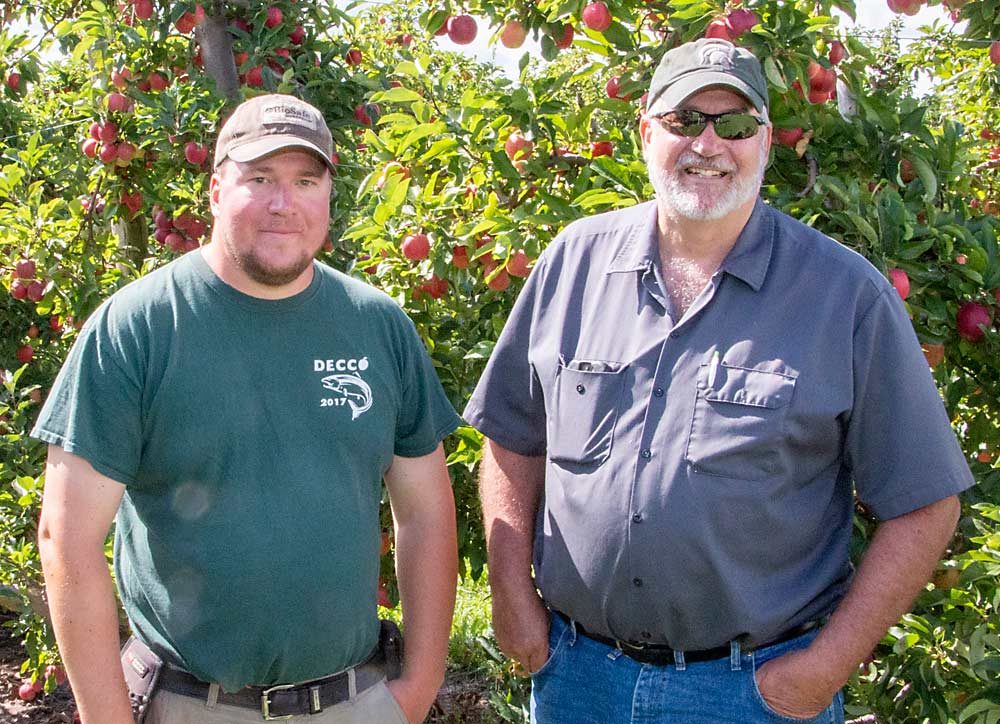
“Normally, this time of year I feel behind,” he said.
Despite the expense and paperwork involved, Rasch will probably hire a larger H-2A crew next year. That way, he can have 80 pickers exactly when he needs them.
The farm’s Honeycrisp crop was down this year, but Rasch said it was due to a heavy crop last year.
“The size was smaller last year. This year, we’ve got grapefruit out there on some blocks,” he said with a chuckle. “But that’s the size you want.”
Like other apple growers, Rasch Family Orchards is in the midst of reshuffling its variety mix. They grow about two dozen varieties, but that’s probably too many for the swiftly changing marketplace. Their top three varieties are Gala, Honeycrisp and Fuji.
Last year, they took out 10 acres of Red Delicious, and they’ll take another 5 acres out within the next two years. Earlier this year, they grafted over 15 acres of Jonathan, a variety that isn’t profitable anymore. Ida Red, Golden Delicious, Rome and Jonagold also are shrinking, Rasch said.
Their goal is to sell every apple fresh, so all trimming, spraying and cleaning efforts are done with that in mind. Roughly half of their apples are ultimately sold for processing, however. They store their own apples. The fruit is marketed by Riveridge Produce Marketing, he said.
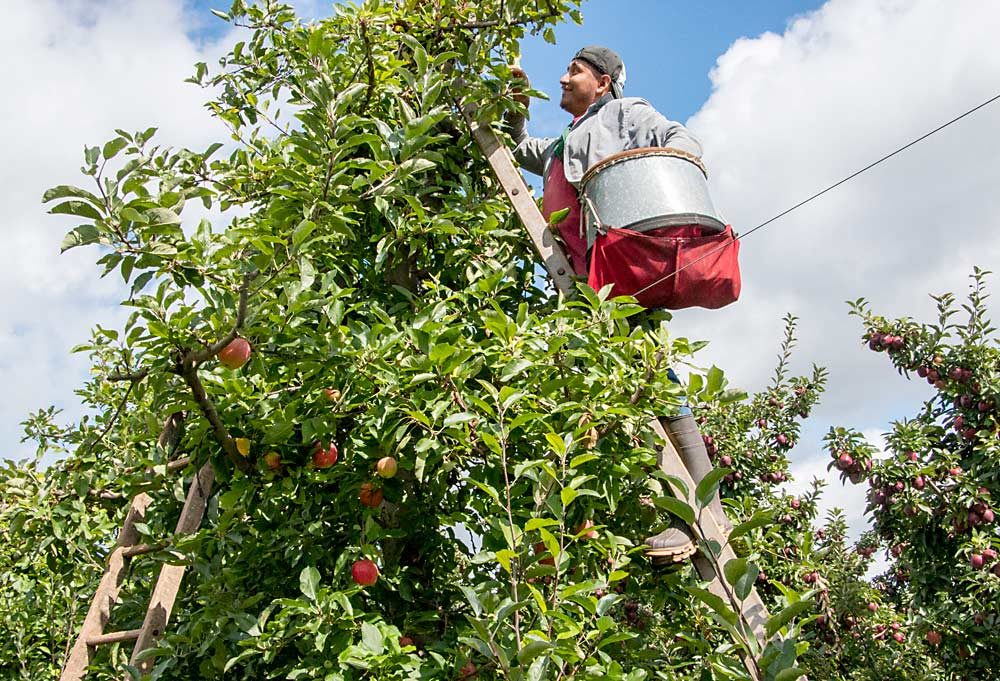
Hail hit some of their orchard blocks in late August, but their orchards are spread roughly 13 miles north-to-south and 2 miles east-to-west, which helps limit the damage. Bitter pit wasn’t nearly as bad as in other years. A wet, cold spring (12 inches of rain between green tip and the second week of June) led to some apple scab, but they kept it under control with a tight spray program.
Fire blight did sneak up on them this year, in blocks where they hadn’t seen it before. The source was probably leafhoppers in a neighbor’s block of apples, Rasch said. They cut out the infected wood and burned it to eliminate the inoculum.
Apple harvest typically runs from late August until late October, but Rasch anticipated an early November finish for 2019.
“We’re picking from 7:30 to 7,” he said. “We’ll keep on that schedule until it gets too dark.”
Wittenbach Orchards
Located in Belding, Michigan, about 30 miles east of the Ridge and in a different microclimate, the harvest at Wittenbach Orchards typically runs a couple of days ahead of that on the Ridge, said Elizabeth Wittenbach, who runs the farm with her father and grandfather.
On Sept. 16, when Good Fruit Grower visited, the 220-acre orchard was focused on picking Buckeye Galas. There were 33 workers picking apples, along with a handful of drivers and loaders. Most of the farm’s labor comes from families that have been showing up for decades, but that source is slowly drying up. They’ll have to start hiring H-2A workers eventually, Wittenbach said.
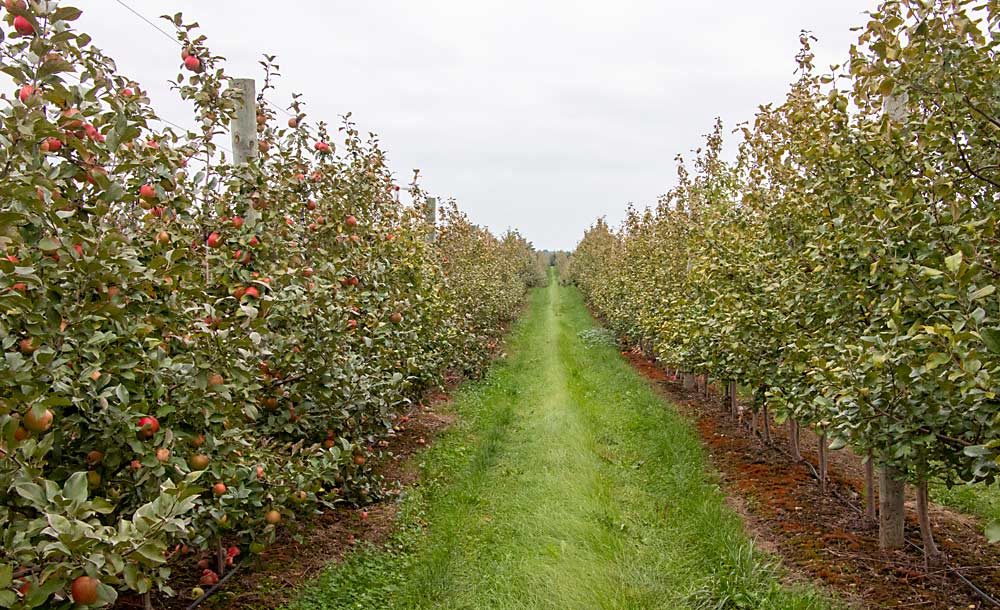
They had already picked SweeTango and first-pick Honeycrisp, the latter of which had a spotty yield because of the return bloom issue. After finishing up with Gala, the plan was to pick Smitten and the remaining block of Acey Mac. Their season ends in late October with Fuji. BelleHarvest packs the orchard’s apples, mostly for the fresh market. They were expecting good sales, particularly from SweeTango and Gala, though trade tensions were putting downward pressure on prices, she said.
Wittenbach Orchards is also reshuffling its variety mix. Ginger Gold, Rome, Jonathan and Paula Red are gone. Golden Delicious is on its way out. Recent plantings include SweeTango and Smitten. They’ll plant Ambrosia next year. They planted Premier Honeycrisp trees in 2017, but don’t want to add more of that problematic — though profitable — variety right now. They already have enough to pick in that harvest window, she said.
“Honeycrisp is such a pain,” Wittenbach said with a laugh. “They’re horrible.”
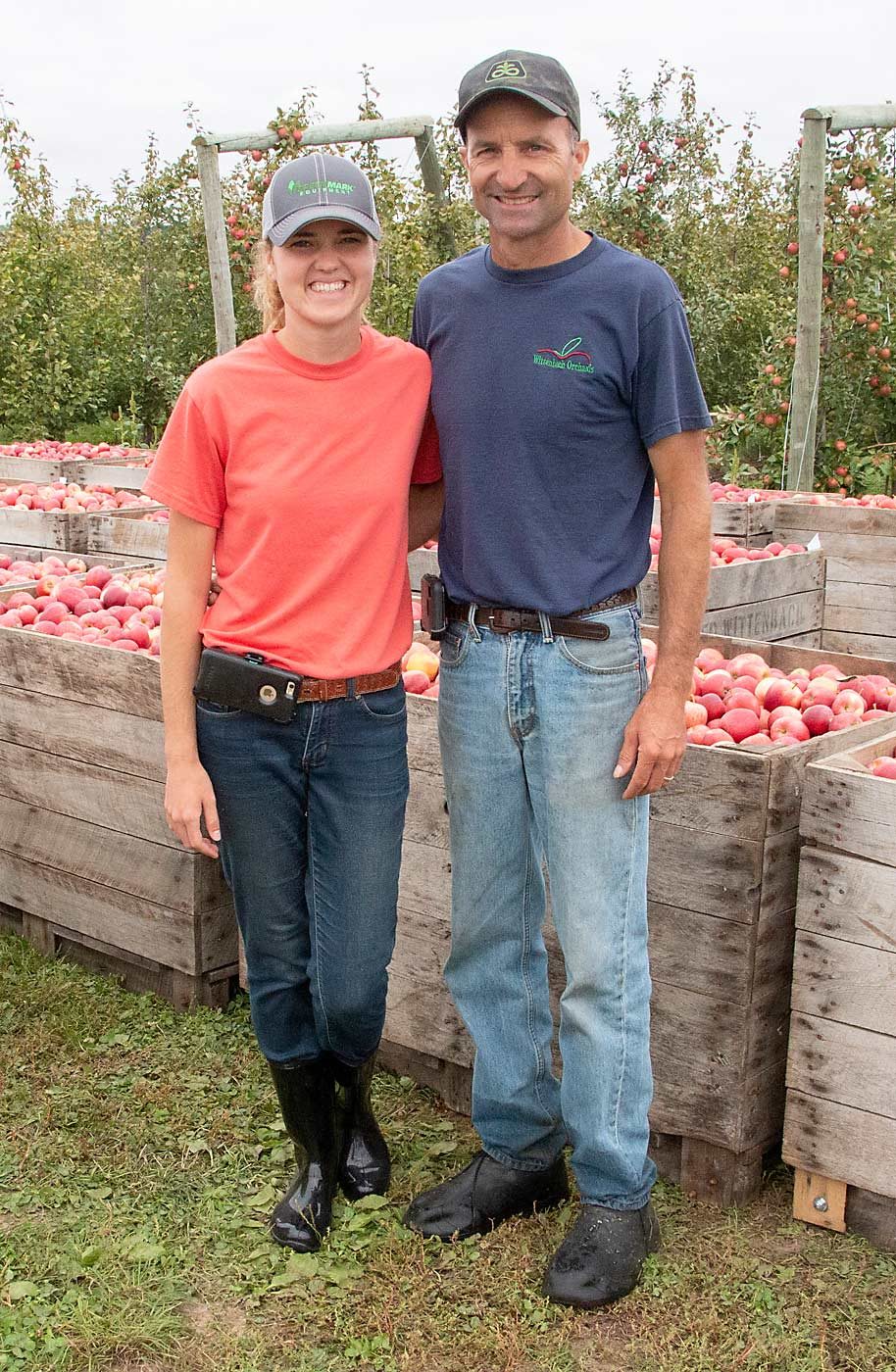
They sell Jonagold to Peterson Farms for the fresh-slice market. Jonagold isn’t as profitable as Honeycrisp or SweeTango, but it requires fewer inputs and is less expensive to grow, she said.
By mid-September, there had been some rainy days but no major picking delays. They were worried about hail early in the season, but none of the hail ended up hitting their trees. They have specific spray programs for codling moth and brown marmorated stink bug, but neither pest had done much damage at that point, Wittenbach said.
All in all, harvest was going well, said Mike Wittenbach, Elizabeth’s father and the farm owner. It wasn’t too hot or too cold, they’d missed major storms, the crop was looking good and labor was adequate. A couple of tough winters had injured some trees, but only a handful.
“There’s always something,” he said. •
—by Matt Milkovich






Leave A Comment